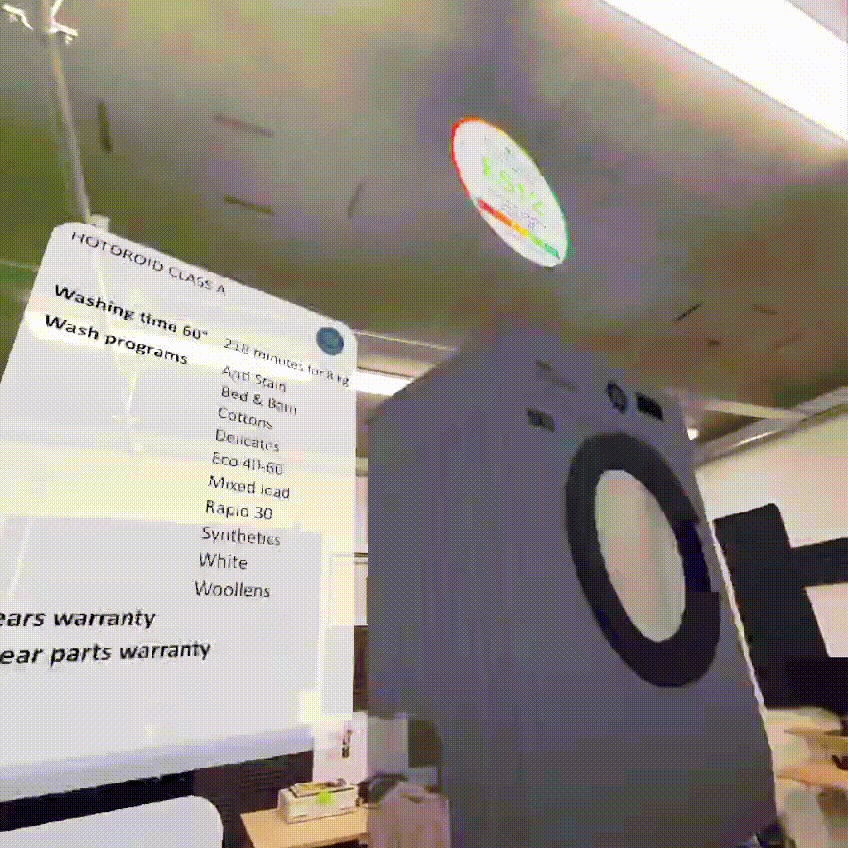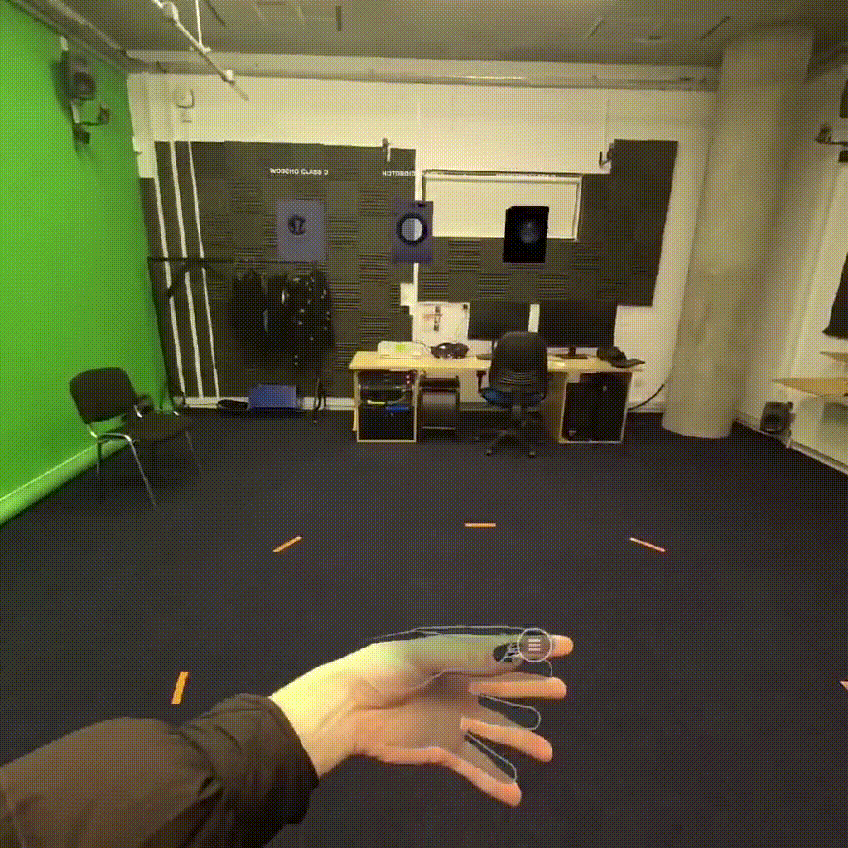EcoQuest Laundry
The project revolves around the development of an Augmented Reality (AR) application focused on promoting energy-saving features in washing machines. Users encounter three virtual washing machines in the distance, and by interacting with a palm menu, they can bring one closer for a detailed demonstration. The selected washing machine hovers in the air, rotates, and showcases its energy-saving information. A unique feature allows users to place the washing machine in its actual size on the ground,and also data visualization providing an immersive and interactive experience. Users can further manipulate the washing machine using hand gestures for a comprehensive understanding of its energy-efficient features.
Walkthrough Video
Why AR?
Why Headset?
Why consider Augmented Reality for this.
Users can add virtual machines to their environments, visualise features of machine, analyse wether its a right fit for their closet or family, and compare multiple machines.
And coming to marketing augmented reality has reduced number of products being returned, and every major companies are trying to invest in AR technology as it promotes user to engage with products which leaves a lasting impression.
In the context of choosing a platform for augmented reality (AR) applications, the preference is for headsets over mobile devices due to their superior field of view and the hands-free interaction they afford. The immersive nature of headsets contributes to a focused and engaging experience, minimizing distractions. However, challenges such as cost and accessibility should be considered. The decision between a native app and a web-based solution depends on factors like performance and accessibility, with careful consideration of user requirements and preferences.
.png)
AR Features




Timeline

Contribution
Set states for machine
This is the foundation of the whole project. It enables different actions users can make in different states of the machine. For example, users can only rotate the machine when it is on ground.

Add gravity
This enables machines to transit from floating state to onground state.


Palm menu
Firstly, I set a trigger which is a Unity built-in event system. To trigger our customized menu script.

What’s more, I set a palm tracking function which is from Meta SDK. It can recognise the detail of palm.

Last but not least, I created a customized script for the palm menu, which can show and hide the palm menu and play the sound.



UV mapping and texture
I am in charge of uv mapping and texture for washing machine. I made these texture in Procreate in iPad and import them into Maya to do uv mapping. Unfortunately, the last texture is broken in Maya. Finally, Chi helped me make the last texture and uv mapping in blender.

Thanks for the outstanding contributions from Girish, Chi, and Mai.
Reflection
How and Why the Response Meets the Brief:
First of all, the project aligns with the brief by incorporating engaging interactions. Users initiate the experience by using a palm menu to bring a washing machine closer, fostering a sense of control and involvement. To enhance user interaction, the application allows users to manipulate the washing machine with hand gestures. This not only adds a layer of intuitiveness but also ensures a user-friendly and memorable experience.
What’s more, the application meets the brief by effectively utilizing AR to display energy-saving information. As the washing machine hovers, it dynamically rotates, showcasing key energy-efficient features and the energy saving data visualization. This ensures that users receive comprehensive details about the product.
Last but not least, addressing the brief's requirement for an immersive experience, the application allows users to place the washing machine in its actual size on the ground. This one-to-one representation enhances realism, aiding users in visualising the product's dimensions in their living space.
Difficulties encountered and areas of smooth progress:
Engaged in the development of AR energy-saving washing machine display projects, experienced a series of challenges and gains. Looking back at the entire process, there are several aspects worth pondering.
In terms of user experience, we are facing some significant challenges. Firstly, Quest 3 must pass the "build and run" test in the Mac version of Unity, and it is difficult to view the content in the console, which makes capturing bugs quite difficult. The limitations of this testing method have increased the difficulty of our work in debugging and problem-solving.
Secondly, the process of integrating Quest 3 has become exceptionally complex. Different team members are responsible for different functions, but during integration, various sizes of issues may arise due to differences in versions, systems, chips, and the use of Meta's SDK. Unlike the initial idea, it is not feasible to independently complete each part and then simply integrate it. On the contrary, we need to spend several days fixing various bugs that arise after integration.
Finding a balance between user experience and performance is also an important challenge. While pursuing a visually appealing user experience, we must maintain the overall performance of the application. Especially in optimizing graphics for Quest 3 users, we encountered some difficulties. Continuously testing and adjusting through "build and run" requires a lot of time and effort, which further increases the complexity of the project. In this process, we have to constantly adjust to ensure that users receive a satisfactory experience without affecting AR interaction.
We have achieved some significant success in the progress of the project. Firstly, despite encountering some complexity during the integration process, we ultimately successfully integrated Quest 3 into our application. This provides users with a more intuitive, interactive, and rich AR experience. This milestone success not only enhances the functionality of the application and the integrity of the project, but also brings users a more immersive AR experience.
Secondly, we have successfully demonstrated the energy-saving characteristics of washing machines through AR applications. We have added information visualization, allowing users to vividly understand this information through the application, which has made positive progress in achieving project goals. By utilizing AR technology, we have successfully transmitted key product information, enabling users to gain a deeper understanding of the energy-saving characteristics of washing machines, thereby enhancing their awareness and understanding of the product.
These successes not only reflect the team's collaborative efforts and technical strength, but also lay a solid foundation for the future development of the project. While facing some challenges and complexities, we have made encouraging progress, laying a solid foundation for providing high-quality and satisfactory AR applications.
.png)